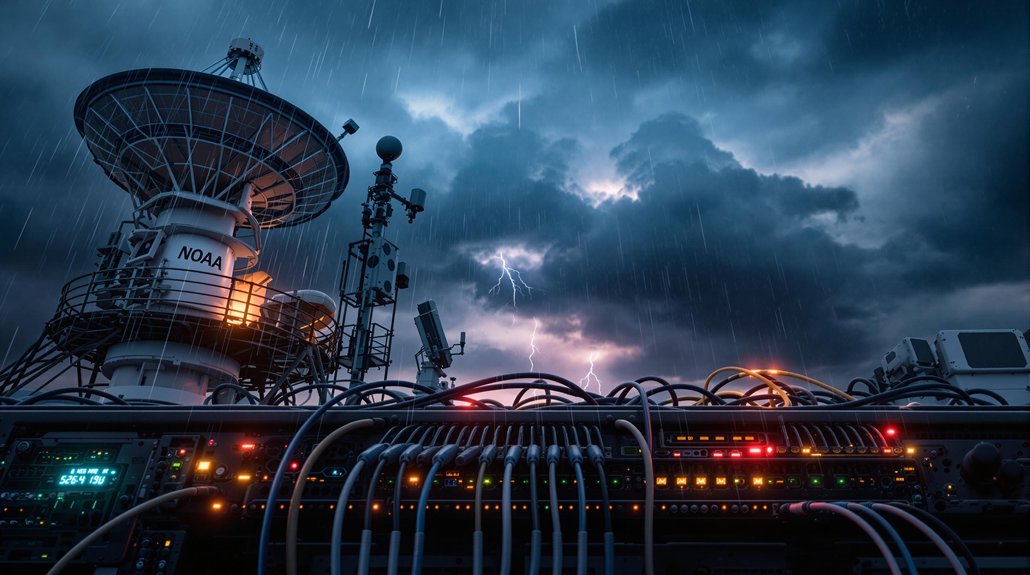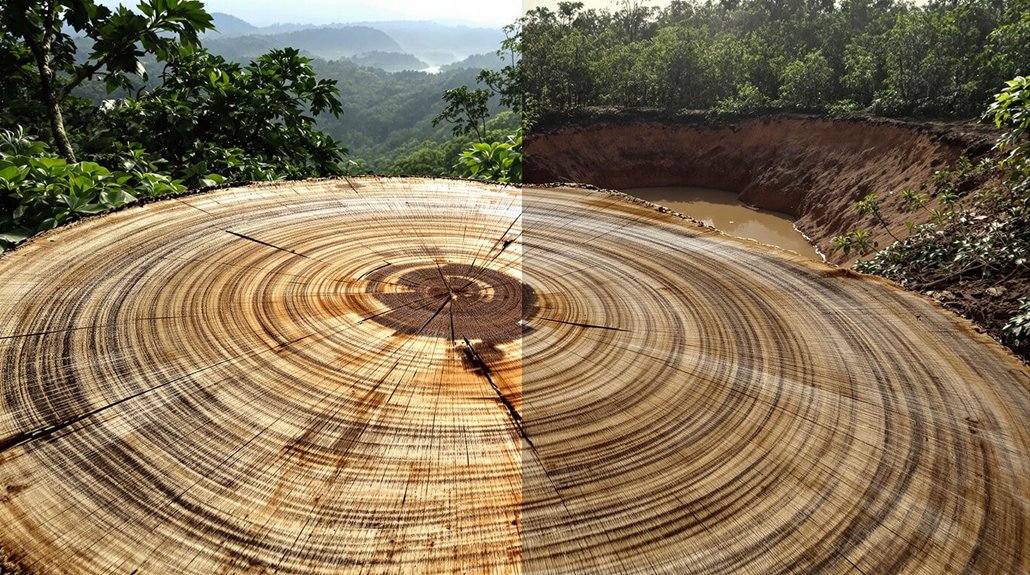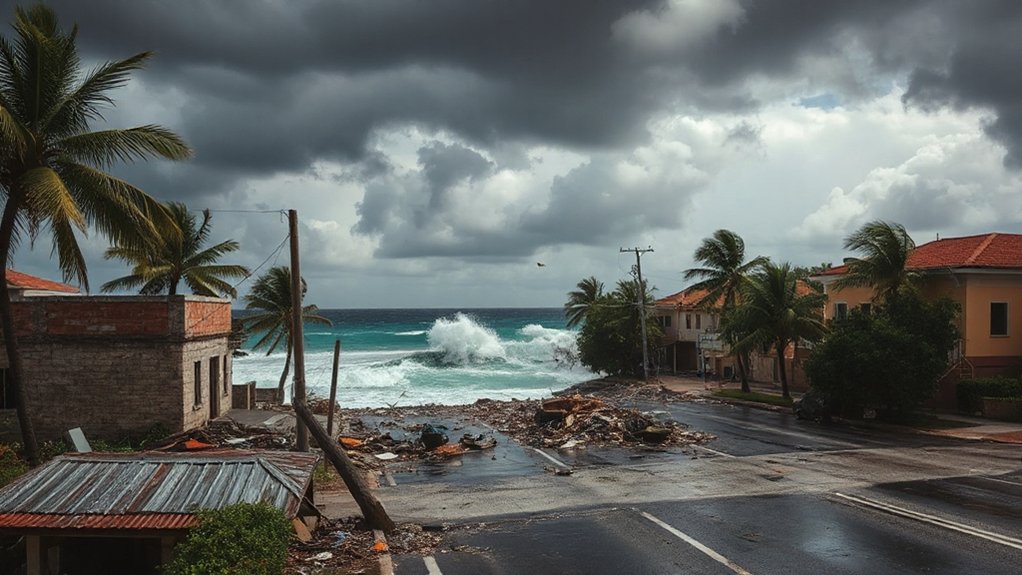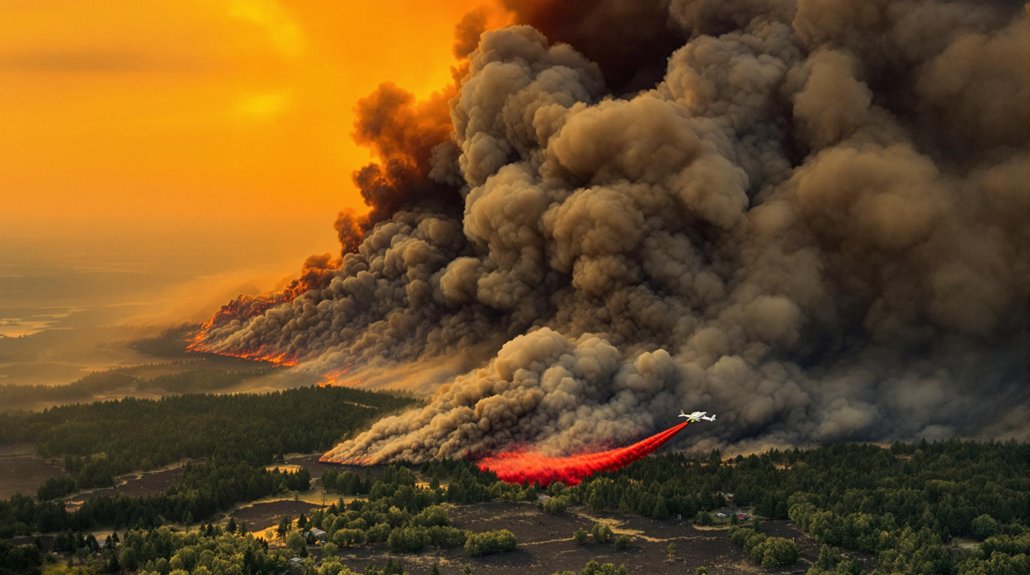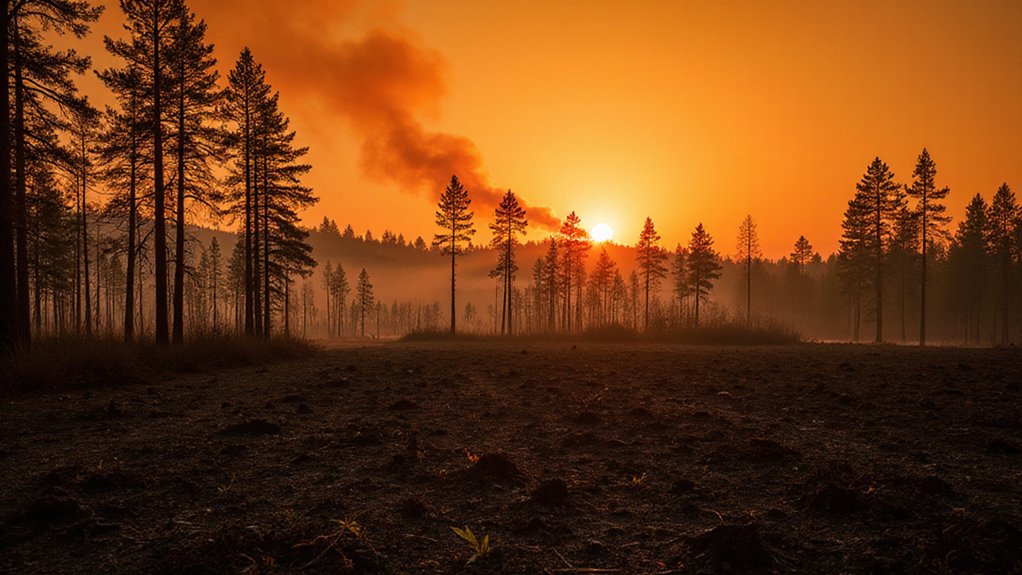NOAA narrowly avoided a major digital blackout that threatened critical weather monitoring systems nationwide. The agency, processing 20 terabytes of data daily, mobilized quickly with cloud providers to maintain service. This matters—real lives depend on these forecasts during storms and disasters. Economic impacts would’ve been massive too, affecting shipping, aviation, and fishing operations. Budget constraints nearly crippled systems that warn millions about deadly weather. The next threat might not end so well.
Countless Americans breathed a sigh of relief last week as NOAA’s threatened digital infrastructure avoided a potentially devastating shutdown. The agency, which processes a whopping 20 terabytes of data daily, narrowly escaped what could have been a meteorological nightmare for the nation.
Let’s be real—this isn’t just about checking if you need an umbrella tomorrow. NOAA’s data keeps planes in the air, ships on course, and tells you when that hurricane might flatten your beach house. When these systems go down, people die. Not to be dramatic or anything.
Weather data isn’t a luxury—it’s the invisible safety net keeping chaos at bay when the atmosphere turns hostile.
The Automated Surface Observing Systems (ASOS) network—the backbone of America’s weather monitoring—continued its 24/7 operations without interruption. Thank goodness. These systems don’t take vacations, even if the government websites that share their findings occasionally threaten to.
The potential blackout would have crippled the American Blue Economy too. Fishing fleets, shipping companies, and coastal communities rely on this data. No data, no fish on your plate. Simple as that.
NOAA’s recent collaboration with commercial cloud providers proved its worth during this crisis. The threatened outage represents yet another assault on scientific research amidst ongoing budget cuts across federal agencies. Moving critical information to distributed systems meant one threatened server room didn’t spell disaster for the entire operation. Smart move, weather nerds.
Behind the scenes, the National Centers for Environmental Information (NCEI) maintained their rigorous quality control processes. Every temperature reading, every wind measurement, every raindrop counted—still verified and archived properly. The data backbone held.
Partnerships with other agencies like the FAA and Department of Defense helped shore up resources during the threatened outage. Turns out having friends in high places helps when digital doomsday looms.
The crisis highlighted why NOAA’s systems need better protection policies. With extreme weather events causing 80% of U.S. power outages since 2000, reliable meteorological data infrastructure has never been more critical. Weather doesn’t care about budget constraints or political wrangling. Neither should our national weather infrastructure. Next time, we might not get so lucky.
